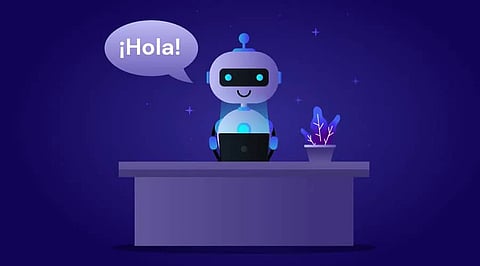

Do Vous Comprender ಕನ್ನಡ? If you utter these words, probably a human would not understand but maybe chatbots will. We need to accept the fact that the majority of the world population do not speak English and only a small portion of people have English as their native language. Thus, it becomes important for the chatbot market and manufacturers to address the multi-lingual aspect. According to Research and Market report, the global chatbot market size is expected to grow to USD 10.5 billion by 2026 at a CAGR of 23.5% during 2020-2026.
Language acts as a great barrier for the rural and non-English speaking populations to acquire assistance through chatbots. Many startups and companies are working towards developing multilingual chatbots to cross this barrier and provide voice assistance to a wider audience.
Businesses today are not limited to geographical boundaries. The digital world can be accessed from anywhere around the world at any time. The rapid digital transformation amid the pandemic increased the digital migration of consumers, thus accelerating the demand for personalized customer services. Today's consumers prefer to interact with chatbots for enhanced and faster interactions.
Multilingual chatbots enable consumers to interact in comfortable languages without compromising the quality of the conversation. With multilingual chatbots, it becomes easier to provide personalized customer service in native languages. Increasing customer base and enhancing the reach of your services to a wider audience are other benefits of leveraging multilingual bots.
By respecting different linguistic nuances, multilingual chatbots will connect the rural population with digital services and support. For example, in a country like India, languages are a part of its culture. There are a variety of local languages and dialects. If chatbots are only equipped with one dominant language, it becomes difficult to enhance the services to a majority of the population in India.
Adopting multilingual chatbots will help the service providers to gain a competitive edge in the market and an increased return on investments. Managing a surge in calls and customer queries can be challenging and multilingual chatbots can eliminate the waiting time by handling requests in different languages. With these chatbots, companies can also reduce costs by using less manpower and maintenance costs.
Conversational AI is a strong pillar behind these chatbots. AI-based chatbots leverage artificial intelligence and NLP to augment human conversations and replicate them. Intelligent conversational chatbots use automated speech recognition techniques to understand the words uttered by the users. The sophisticated natural language processors used in these multilingual chatbots enable them to understand different languages. Collected data on various languages forms a database that is usually used to train algorithms and machine learning models. There are platforms that provide no-code chatbot building softwares. BotMyWork multilingual messenger chatbot builder is an example.
There are many startups and companies offering multilingual chatbots. The role of chatbots in customer service is significant and thus startups are investing in them. During the Covid-19 pandemic, a Bengaluru-based startup CoRover came up with AI-based video bot AskDoc that addressed queries related to the pandemic. This bot aimed at serving a larger audience with multilingual voice and text systems.
Another multilingual chatbot by Vernacular.ai, a voice automation startup again from Bengaluru recently grabbed the headlines. The chatbot named Vernacular Intelligent Virtual Assistant (VIVA) aids contact centers of various enterprises to deal with customer queries pouring in from different languages. The bot is said to understand over 16 languages and more than 160 dialects.
Multilingual chatbots are the answer to the future needs of personalized customer interaction. Engaging consumers and conversing in native languages will increase the conversion rates and enable to widen the service to a larger base audience. The new normal has induced many drastic changes in our lives and AI is one of them. Oh, by the way, the sentence mentioned in the beginning means 'Do you understand Kannada' and is written in English, French, Spanish, and Kannada.
Join our WhatsApp Channel to get the latest news, exclusives and videos on WhatsApp
_____________
Disclaimer: Analytics Insight does not provide financial advice or guidance. Also note that the cryptocurrencies mentioned/listed on the website could potentially be scams, i.e. designed to induce you to invest financial resources that may be lost forever and not be recoverable once investments are made. You are responsible for conducting your own research (DYOR) before making any investments. Read more here.
